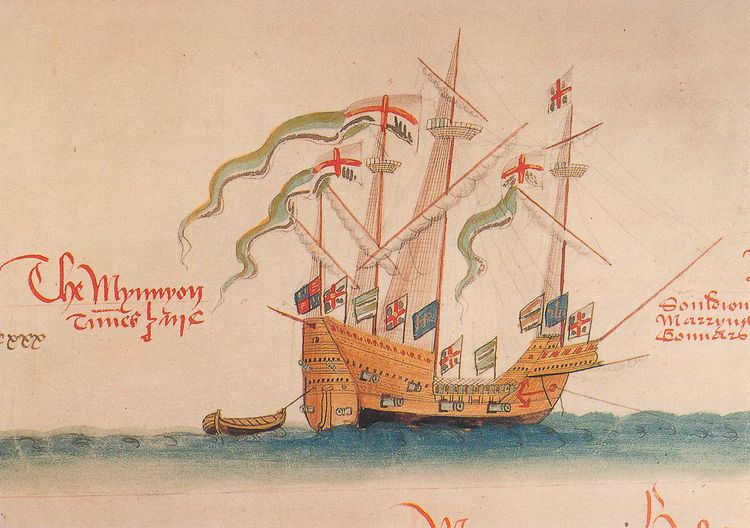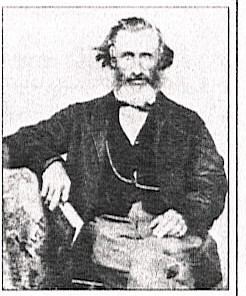Years of service 1544-1589 Spouse(s) Mary Langton | Name William Wynter | |
 | ||
Battles/wars Siege of LeithSpanish Armada People also search for Jacques de la Brosse, James Croft | ||
Snowdeath vs william wynter legend warriors
Sir William Wynter (c.1521 – 20 February 1589) was an admiral and principle officer of the Navy Board under Queen Elizabeth I of England and served the crown during the Anglo-Spanish War (1585–1604).
Contents
- Snowdeath vs william wynter legend warriors
- progressive house antian rose eric kauffmann love hurts whiscaskaat william wynter remix
- Personal
- Naval career
- Mission to Scotland
- Operations off Ireland
- Spanish Armada
- Offices held
- Legacy
- References

progressive house antian rose eric kauffmann love hurts whiscaskaat william wynter remix
Personal
Wynter was born at Brecknock, the son of John Wynter (ob.1546 - a merchant and sea captain of Bristol and treasurer of the navy, who was friendly with Sir Thomas Cromwell) and Alice, daughter of William Tirrey of Cork.
Naval career
William was schooled in the navy. He took part in the 260 ship expedition of 1544, which burned Leith and Edinburgh, and held the office of Keeper of the King's Storehouse at Deptford Strand. In 1545 he served in Lord Lisle's channel fleet; two years later he took part in Protector Somerset's expedition to Scotland and victory at Pinkie, and in 1549 an expedition to Guernsey and Jersey. In that year he was appointed Surveyor of the Navy, and in December as captain of the Mynion he captured the prize of a French ship, the Mary of Fécamp, laden with sugar. A reward of £100 was to be shared out among the crew of 300. In 1550 he superintended the removal of the ships from Portsmouth to Gillingham in the Thames Estuary, Edward VI owed him £471 for a voyage to Ireland in 1552, and in 1553 he went on a voyage to the Levant.
In 1554, William spent several months in the Tower of London under suspicion of involvement in Thomas Wyatt's rebellion against Mary I of England, until he was pardoned in November.
In 1557 Wynter was appointed Master of Navy Ordnance, which post he held along with the Surveyorship for the rest of his life. He was present at the burning of Conquet in 1558. On 22 May 1558 Wynter brought ships from Dunkirk to Dover which were sailing on to Portsmouth. He was sent with a fleet to Scotland in January 1560 during the crisis of the Scottish Reformation.
Mission to Scotland
Wynter commanded a fleet to guard against French landings in Scotland in 1559, while diplomatic efforts were made to negotiate sending an English army to aid the Scottish Protestants. After briefing at Gillingham, Wynter left Queenborough in the Lyon on 27 December, and sailed from the Lowestoft sea-road on 14 January with 12 men-of-war followed by two supply ships, the Bull and the Saker. After the fleet was dispersed by a storm off Flamborough Head on 16 January, the damaged Swallow, Falcon, and Jerfalcon were left at Tynemouth, and the rest of the fleet passed Bamborough Castle to Berwick upon Tweed, where 600 hand gunners were embarked. The Duke of Norfolk, commander in the North, gave Wynter orders to hinder any French landings in the Firth of Forth, but to avoid battle, pretending he came up-river by chance without any official commission. At Coldingham bay, Wynter paused to send a copy of his log, which survives, to London.
Eight ships including the Antelope and Lyon carried on into the Firth of Forth towards the fortress Island of Inchkeith on 21 January. Wynter's blockade was immediately effective in preventing communication by sea from Edinburgh to the French garrison at Dunbar Castle. Although he could not do as much as he wished because his small landing boats were lost in the storm, he captured two French ships loaded with armaments. At first the French had thought that Wynter's fleet were French ships bringing more troops, and their response was to send these boats loaded with munition for Henri Cleutin who was advancing on St Andrews. Instead, Cleutin was forced to race back to Stirling overland, and William Kirkcaldy of Grange delayed him by cutting the bridge over the Devon at Tullibody.
On 24 January Wynter allowed the Scottish Snawdoun Herald John Patterson with the trumpet messenger James Drummond aboard the Lyon, who demanded to know his business in Scottish waters. As instructed, Wynter told Snawdoun he had been bound for Berwick, and came into the Forth expecting "friendly entertainment" as the nations were at peace. As the French forts had fired on him, and he had heard of the political situation in Scotland, he had taken it upon himself to aid the Lords of the Congregation against the "wicked practices of the French," and so Elizabeth I of England knew nothing of it. Patterson and Drummond visited the English fleet four times.
Wynter's actions and speech to the herald were reported to the Privy Council of England. To maintain the pretence he was instructed not to bring any ships he captured to England, but berth them in the friendly harbours of Dundee and St Andrews which were in Protestant hands. As late as 16 February, Norfolk sent the Chester Herald, William Flower, to Mary of Guise who declared the English fleet had arrived in the Firth by accident. She claimed that the Lords of the Congregation had revealed advance knowledge of Wynter's mission and were in communication with him. Flower replied that he had no knowledge of ships or letters. While this ineffectual diplomacy continued, the Lords of the Congregation concluded the Treaty of Berwick with Norfolk, which set conditions for English intervention. Some of the sons of the leading Protestants were given up as hostages to guarantee the treaty, and these boys were delivered to Wynter.
Wynter continued to harass shipping and then supported the English army brought in by the Treaty of Berwick to the Siege of Leith. He burnt seven ships under d'Elbouf; not only that, all supplies were cut off from France. He kept up a naval bombardment of the town. On Saturday 7 May 1560, Wynter waited for a signal to sail up the Water of Leith and land 500 men on the quayside called the Shore, but the signal never came as the English assault on the walls had failed. The siege was ended by the negotiation of the Treaty of Edinburgh of 1560 which was the effective conclusion to the 'Auld Alliance'. Lord Burghley reported to the Privy Council that all spoke well of Wynter's conduct and he "was to be cherished." In July, Wynter discussed his fleet's return to Gillingham for re-fitting in dry-dock, but "the most expert officers of the Admiralty" sent the fleet to active service at Portsmouth, on their way escorting the ships evacuating the French army from Scotland to Calais.
In 1561 he purchased Lydney Manor in Gloucestershire as his residence. In that year, he helped save the Palace of the Bishop of London from fire by advising the Mayor of London, William Harpur to demolish the roof of the adjacent north aisle of St Paul's Cathedral when the church caught fire after being struck by lightning on 4 June 1561. In 1563 he served in the fleet off Havre. In 1570, he was sent by Elizabeth I to escort Anne of Austria on her sea journey from the Netherlands to mary Philip II of Spain.
Operations off Ireland
In 1571, during the first of the Desmond Rebellions one of Wynter's ships was seized at Kinsale by James Fitzmaurice Fitzgerald, the Irish rebel. On 12 August 1573, Wynter was knighted, but in 1577 he was passed over for the post of treasurer of the navy in place of Sir John Hawkins, a promotion that would have doubled his income. Nevertheless, Sir William Wynter and his brother George, both received a handsome return on their investment in Sir Francis Drake's 1577 Voyage. In 1579 he commanded the squadron off Smerwick in Ireland, cutting off the sea-routes and seizing the ships of the papal invasion force, which was landed by Fitzmaurice in the company of Nicholas Sanders launching the Second Desmond Rebellion; during this campaign he assisted in the siege of Carrigafoyle Castle.
Spanish Armada
In 1588, the year of the Spanish Armada, Wynter joined the main fleet of Lord Howard off Calais and proposed the fire-ship plan to drive the Spaniards from their anchorage; he took a celebrated part in the battle off Gravelines on 29 July, which was the only time in his career when he had hard fighting. During the engagement, he received a severe blow on the hip when a demi-cannon toppled over. It is said that he was the only one to have understood the completeness of the navy's defence, assessing from his experience at Leith that the enemy army's transport would require 300 ships, while Howard and Drake thought that the invasion of England might still take place despite the naval repulse delivered to the armada.
Vice-Admiral of England Sir William Wynter was granted the manor of Lydney in recognition of his services against the Spanish Armada.
Having been created admiral, Wynter supported charges of dishonesty against the treasurer of the navy, Hawkins, and wrote critically of him to Sir William Cecil, Lord Burghley.
Offices held
IncludedLegacy
Wynter married Mary Langton (died 4 November 1573, Seething Lane, London, daughter of Thomas and Catherine) and had issue:
His grandson was John Winter who was an active royalist during the English Civil War.
Wynter died on 20 February 1589 aged 68. A Latin eulogy by William Patten was published in that year.
